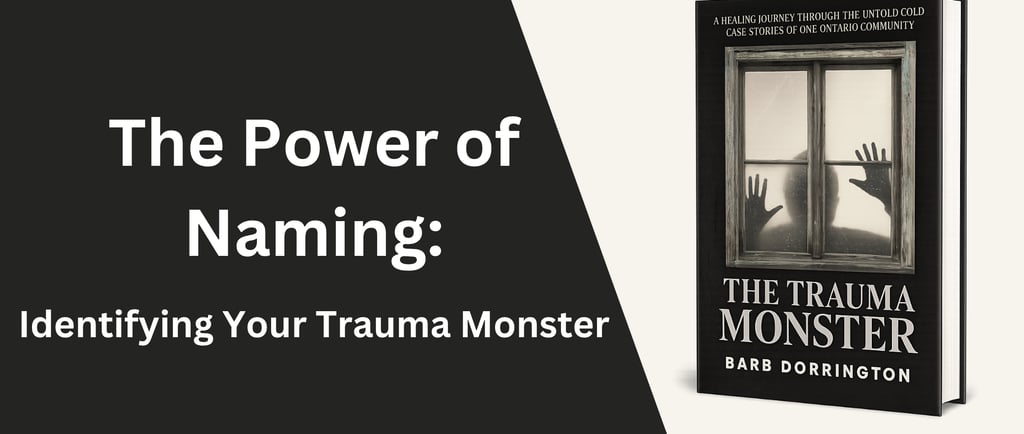The Power of Naming: Identifying Your "Trauma Monster"
Barb Dorrington
7/28/20252 min read


For many trauma survivors, the pain they carry can feel invisible but ever-present—an unnamed force that shapes thoughts, emotions, and actions in unpredictable ways. In her deeply personal and practical book, The Trauma Monster, Barb Dorrington introduces a transformative concept: naming your trauma.
By referring to trauma as a "monster," Dorrington offers readers a way to visualize and externalize what often feels abstract and overwhelming. This act of naming is more than metaphor—it is a powerful psychological tool that helps individuals confront their trauma with greater clarity and control.
Why Naming Matters Naming your trauma creates separation. It allows you to see the trauma not as part of your identity but as something that happened to you. This shift in perspective opens the door to healing. Instead of saying, "I am broken," you can say, "This is the monster I battle, and it doesn't define me."
Just as children feel safer when they can name their fears, adults also benefit from this sense of clarity. Naming the trauma can reduce its power, transform fear into awareness, and shift the narrative from victimhood to empowerment.
How to Identify Your Trauma Monster
1. Give It a Name: It doesn’t have to be literal. It could be "The Critic," "The Shadow," or even something whimsical that helps lessen its grip.
2. Describe Its Traits: Is your Trauma Monster loud or silent? Sudden or persistent? Does it show up during stress, relationships, or quiet moments?
3. Draw or Journal About It: Creative expression helps bring your monster into the light. The more detail you give it, the more you understand it—and yourself.
4. Talk to It: This may sound strange, but writing letters to your Trauma Monster or dialoguing with it in a journal can be a powerful way to reclaim agency.
From Naming to Navigating Once you’ve named your Trauma Monster, you can begin to respond to it rather than react. You might say, "Ah, that's just the Monster showing up again" instead of being swept away by fear or shame. This simple act of recognition empowers you to take a breath, use your tools, and choose your next move.
As Barb Dorrington writes, the goal is not to destroy the monster, but to understand it, challenge it, and ultimately disarm its power over your life.
Naming your trauma is the first step in rewriting your story—one where you are not the victim of a faceless force, but the hero who confronts the monster and keeps moving forward.


